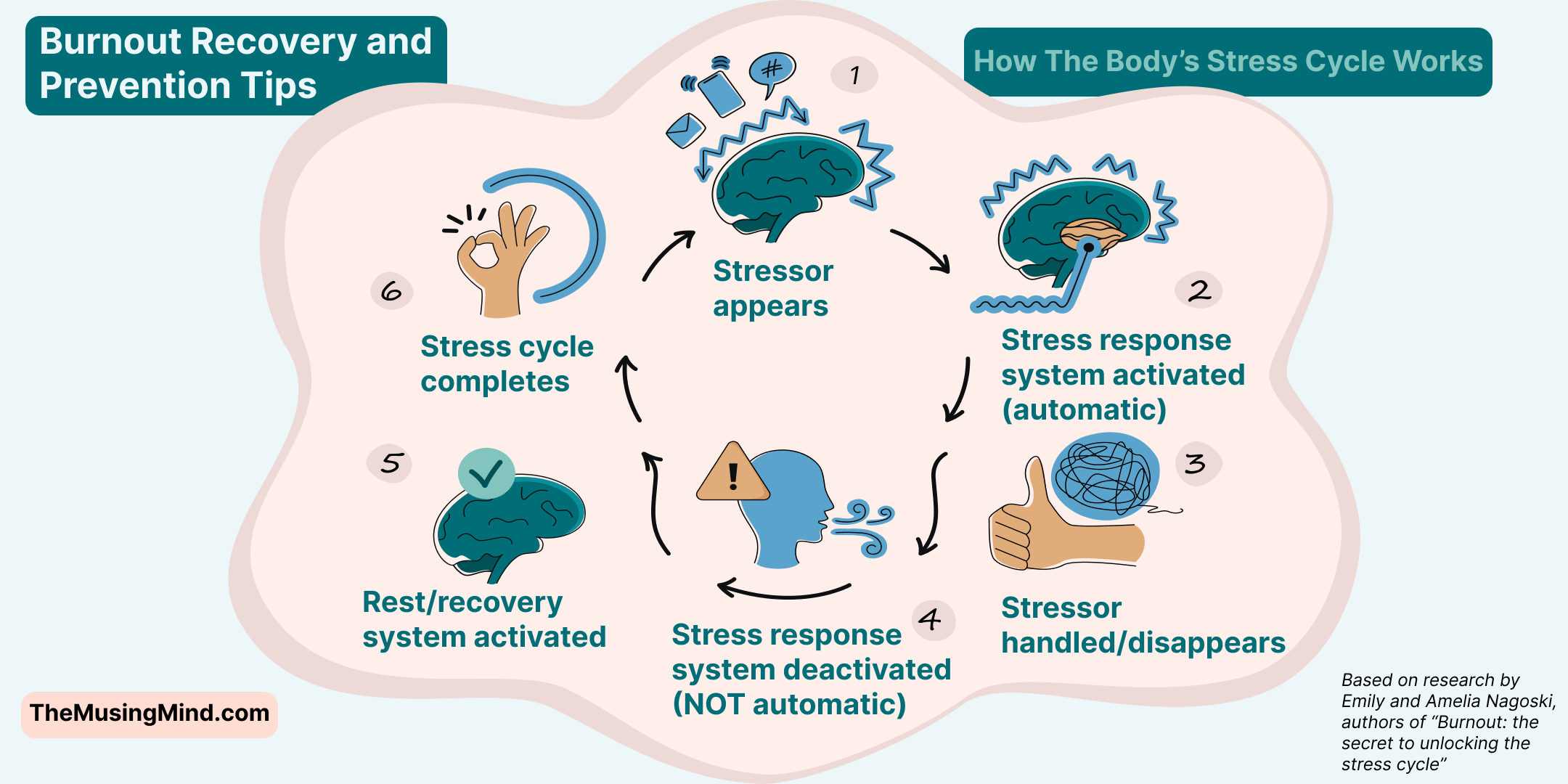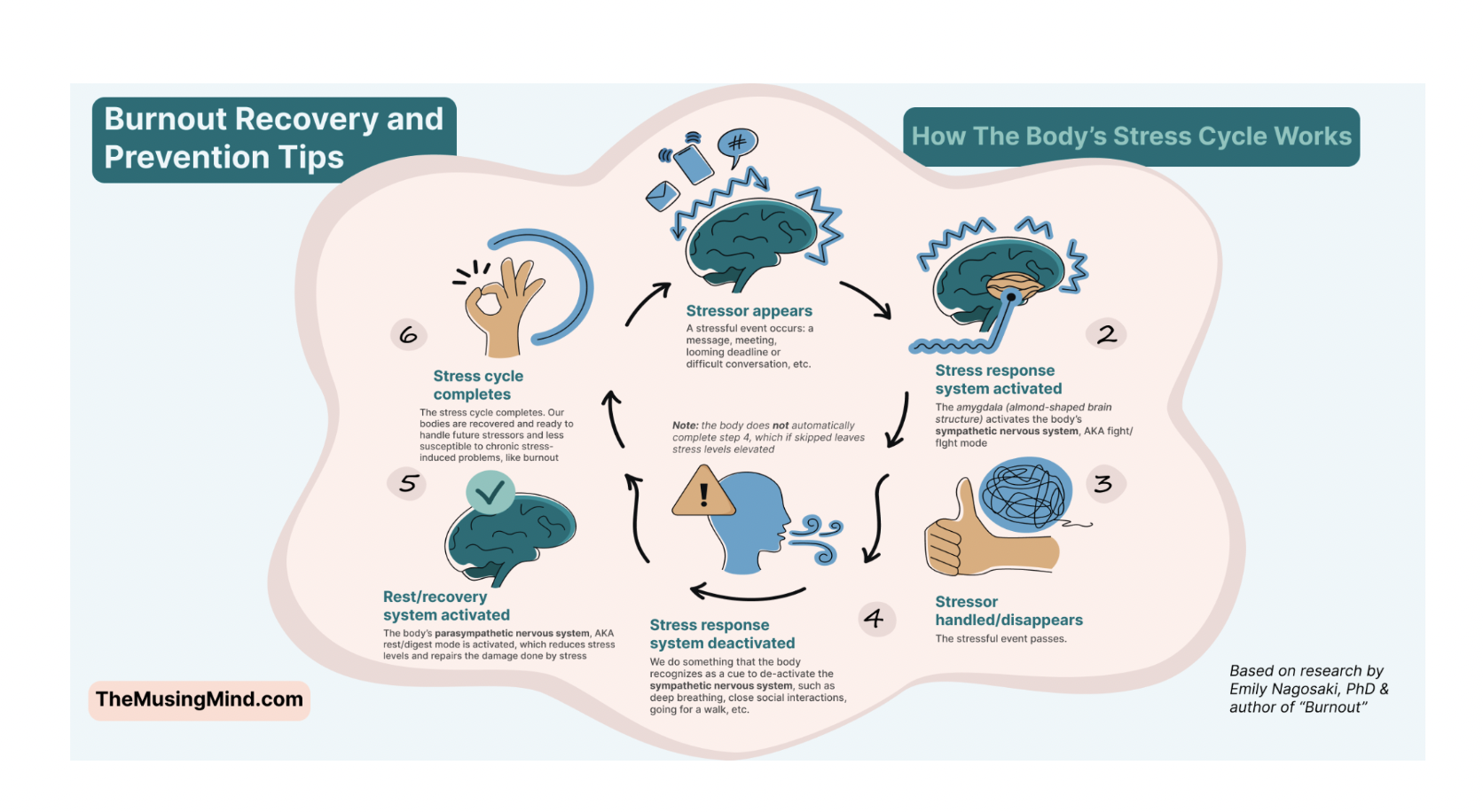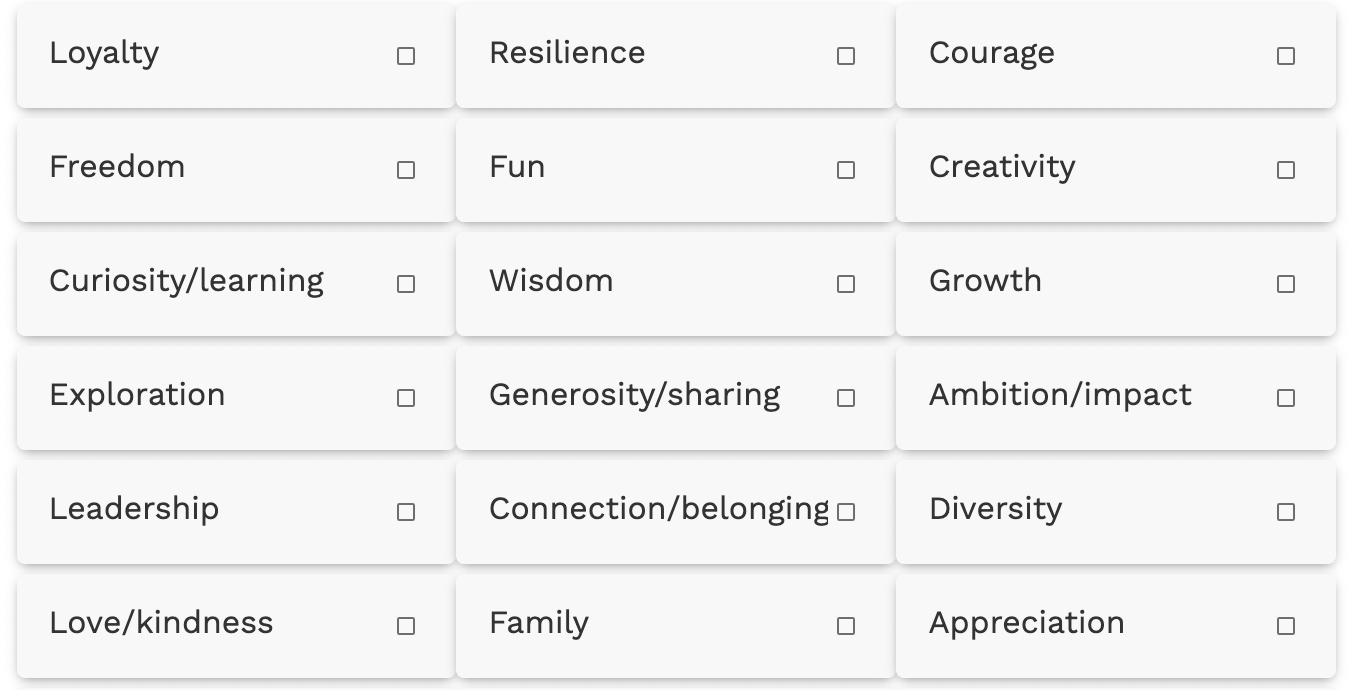3 Stages of Burnout Recovery: How to recover from burnout at work
Illustration by Анна Максименко
Other resources you may like:
Evaluate your life satisfaction (self-assessment)
How burnt out are you? (self-assessment)
3-week burnout recovery plan (self-paced guide)
While leaving your job can make recovering from burnout a lot easier, don’t despair if you are not in a position to leave your job. There is still a path to recover from burnout while working.
The exception to this is the toxic workplace, where leaving such a working environment is a prerequisite to burnout recovery.
Here are 3 steps for recovering from burnout while working, based on my work and research as a burnout coach.
1. Find ways to allow your brain/body to properly rest
Burnout is a body and mind state that is heavily influenced by a buildup of chronic stress
Burnout occurs over time because the body is not able to properly process the stress that accumulates during work. This process of the body’s management of stress accumulation is referred to as “the stress cycle,” by burnout researchers Amelia and Emily Nagoski, in their book, Burnout.
In brief, a stress cycle refers to a bodily process that involves both a stress-response and a stress-release. A stress cycle has:
A start, where the stressor initiates the body’s stress response system
A middle, where the body is physically mobilized by the stress response system to deal with the stressor
An end, where the body receives the signal that the stressor is gone and it is now safe to deactivate the stress response system
The problem is that if the stress cycle is not complete, it can lead to a chronic buildup of stress. Even after a stressor disappears, such as the completion of a difficult conversation, the body does not automatically process the stress buildup. Rather, the body requires certain cues to recognize that the stressor is gone and it is safe to begin reducing the stress and calming down.
Download the Stress Cycle PDF here.
In order to recover from burnout, the first step is to establish a routine of regularly completing your body’s stress cycle. This is essential to allowing your brain and body to get proper rest. Here are 5 ways to do so:
Move your body or exercise, such as cardio. Using your muscles is the ancient reason for our stress response system after all; but be sure to either not skip the cool down or also do one of the other actions below, in order to signal to your body it’s also time to rest and recover. Alternatively, tense and release all of your muscles.
Prioritize getting 7–9 hours of sleep per night, each night. Sleep is very important in burnout recovery, and getting less than 7 hours of sleep can interrupt stress cycles and damage the brain’s ability to function properly.
Spend time in nature each day, even if it’s in your garden or a short walk in the nearby park. Time in nature is proven to reduce stress accumulation in the body.
Do daily deep breathing exercises. Deep breathing is one of the easiest ways to unlock proper rest/recovery for the body, by shifting the body from fight/flight mode into rest/recover mode.
On a weekly basis, prioritize getting non-work social interactions, — even interactions with strangers or animals can reduce stress and release oxytocin (a hormone that plays an important role in reducing bodily stress).
For more insights on what causes burnout, explore this in-depth review of how burnout works.
2. Investigate the mental narratives compelling you to work more
Burnout is a body and mind state that arises after chronically insufficient rest/recovery, which is often triggered by insufficient reward
Getting proper brain and body rest is step #1 because an overactive stress-response mode pushes our critical thinking skills offline in favor of reactionary, survival-oriented thinking.
Until you have recovered enough mental capacity to be able to step back and think critically, you won’t be effective at identifying the narratives pushing you to work to the point of burnout (step #2), or how to better regulate your workload (step #3).
What do these narratives look like?
Taking my own burnout as an example, I was influenced by a combination of life events and internalized mental narratives, which drove me to seek more reward from working harder, and to regulate my workload less:
Early in my career, I became a high-achiever, which made me feel I needed to work more and more in order to maintain the high-achiever status I was proud of having attained. I was too guilty to work less.
The growing achievements of my network drove me to feel insufficient by comparison, and to feel I needed to prove myself more in response. I was too ashamed to work less.
My life progressed through a series of events that made me feel awful (the death of my mom, losing social connections, romantic rejection), which caused me to deny the emerging problems from working so much, and hold onto tighter to the only thing that seemed to be my last bastion: the only controllable source of validation. I was afraid to work less.
Other mental narratives can include perfectionism or the desire to control, fear of failure, and fear of disappointing others or saying no.
Until you face the life events and narratives and their associated feelings and replace them with more sustainable narratives, you will remain at risk of burning out.
The exception is where your workload is actually rewarding, but overwhelming. This requires focusing more on step #1 (completing the body’s stress cycle) and workload regulation (discussed in step #3).
Here are some ways that can help you learn how to replace your burnout-driving mental narratives with sustainable mental narratives and life events:
Work with a therapist to explore and integrate the significant life traumas or experiences that created an unconscious need to work in order to be safe/okay/accepted, so that you can be free to operate of your own conscious volition.
Develop your own, internal sense of fulfillment, in order to move beyond relying on external sources of validation such as work. Develop a life purpose statement, define your personal values, and reflect on what it will take for you to say no or slow down at work when needed, and make decisions based on what will serve you most, rather than decisions based on fear/guilt/shame.
Diminish the coercive power of work narratives by diversifying your natural need for validation beyond work. Trade work hours for hours spent in other areas of life, such as relationships, personal health, creative outlets, and non-work pursuits or hobbies.
Defining your personal values is a very useful step that many people don’t stop to do
One final tip is to work with a burnout coach to help you establish a plan for recovery, investigate the causes of burnout, and hold you accountable to your burnout recovery plan. I know firsthand how hard it is to recover from burnout, and I urge you not to try to do it all on your own.
3. Find ways to regulate your workload better in the future
Burnout is a body and mind state that arises after chronically insufficient rest/recovery, which is often triggered by insufficient reward or improper workload regulation.
Once you have freed up mental capacity to think creatively and have made progress in weakening the mental narratives or compulsion to work that would cause you to add more work back to your plate even if you take some away, you’re ready for sep #3.
Here are some tips for how to better regulate your workload and prevent future burnout:
List out what work you directly control and ask yourself whether you really need to do those items, or whether you can reduce or let go of those items, such as declining any meeting invites that are optional.
Give yourself permission to do the minimum amount of work needed to check tasks off during your recovery period and to refrain from volunteering for stretch projects.
Train yourself permission to ask for help, clarify unclear expectations (rather than assuming), respectfully say no to new work, and to negotiate/compromise to make your workload manageable.
Begin to draw more firm work-non-work lines wherever possible: for instance, start with working 30 minutes less each day for a few weeks, then work 60 minutes less for a few weeks, and keep going until you arrive at 40 hours.
Work with your manager or mentor to evolve your job description or role to more closely align your skillset with work that is more rewarding and aligned with your personal values.
If you are personally struggling with burn-out, remember:
You are not alone.
You are not damaged goods.
You do not need to be ashamed.
You can make it through this.
Burnout is a serious and complex issue, and everyone’s recovery journey is different. Continue your recovery with these additional steps:
Start the free, self-guided 3-week recovery plan
Read stories from people who have burned out discover burnout resources at LearnAboutBurnout.com
Explore how working with a Burnout coach can help
Take this confidential self-assessment to evaluate your current level of burnout




